Research Article
Volume 3 Issue 4 - 2019
Proportion Content of Wholesale Cuts in Meat Mutton on the Sex of El Gash Sheep (Male and Female) in Kassala State – Sudan
Ministry of Animal wealth and fisheries Kassala State, Sudan
*Corresponding Author: Omer Mohammed Omer Musa, Ministry of Animal wealth and fisheries Kassala State, Sudan.
Received: January 13, 2019; Published: February 05, 2019
Abstract
This study were carried in EL Gash area of Northern part of Kassala State The slaughter data involve 15 males and equal number of females of EL Gash sheep slaughter at different ages. The wholesale cuts of the carcass were consist of leg and chump, loin, fore short quarter, Breast, best end of neck, tail and neck, non-significant differences were observed in the Proportion of whole sale cuts in both lambs sexes. The result indicated that the leg and chump, loin, and the tail were slightly heavier in the female than the male while single short fore quarter Breast, best end of neck and the neck were heavier in the male. The muscle of the whole sale cuts in both sexes were not significant the result indicated that the muscle in leg and chump, breast and tail were heavier in the female than the male. But the muscle in the single short quarter, breast, Best end of neck and the neck were heavier in the male. The bone of difference carcass cuts of both lamb sexes were not significant. The result indicated the bone percentage of wholesale cuts were heavier in the male comparing with the female except the lion and the tail.
Muscle: Bone: Fat: ratio
Muscle: bone: fat: ratio: we found in the male were 6:2: 1 respectively, but in the female were 5:2: 1 respectively while the total fat percentage was high in the females. But the Muscle: Bone ratio were be 3:1.The female deposit fat at faster rate and had more carcass fat and slightly less muscle and bone
Muscle: bone: fat: ratio: we found in the male were 6:2: 1 respectively, but in the female were 5:2: 1 respectively while the total fat percentage was high in the females. But the Muscle: Bone ratio were be 3:1.The female deposit fat at faster rate and had more carcass fat and slightly less muscle and bone
Keywords: Wholesale cuts; Proportion content; Sex meat mutton
Introduction
Whole sale cuts
The percentage of prime first quality meat is not affected by carcass weight. As slaughter weight increase carcass lean decrease and sub-cuteness fat increase and there is no change in intramuscular fat, as a male sex hormone favors' the growth of the head, neck and shoulder, It was found that the neck and the shoulder were greater in males than the females in the sheep Colomer., et al. (1992).The relative growth of bone, muscle and fat were reversed under semi-striation. The percentage of prime first quality meat is not affected by carcass weight. As slaughter weight increase carcass lean decrease and sub-cuteness fat increase and there is no change in intramuscular fat. (Wood et al., 1980). The depletion of fat was rapid and the degree of involvement of muscle and bone depended upon the severity and length of time in semi-starvation. The muscle percent more than bone and the fat less than the bone naturally. Elkrim and Owen (1987) reported carcass joints percentage for Ashugor and Watish as the follows:
The percentage of prime first quality meat is not affected by carcass weight. As slaughter weight increase carcass lean decrease and sub-cuteness fat increase and there is no change in intramuscular fat, as a male sex hormone favors' the growth of the head, neck and shoulder, It was found that the neck and the shoulder were greater in males than the females in the sheep Colomer., et al. (1992).The relative growth of bone, muscle and fat were reversed under semi-striation. The percentage of prime first quality meat is not affected by carcass weight. As slaughter weight increase carcass lean decrease and sub-cuteness fat increase and there is no change in intramuscular fat. (Wood et al., 1980). The depletion of fat was rapid and the degree of involvement of muscle and bone depended upon the severity and length of time in semi-starvation. The muscle percent more than bone and the fat less than the bone naturally. Elkrim and Owen (1987) reported carcass joints percentage for Ashugor and Watish as the follows:
Leg and chump 24.73, 24.82. Lion 10.68, 10.21. Best end of neck 7.7, 7.4 Breast 10.16, 10.4 neck 2.7, 2.84 weight of different joint.
Muscle: Bone ratio
The ratio between total muscle and fat content of the carcass is used as a genetic and nutritional parameter for growth in different breeds, the fat deposit can be controlled environmentally. The breed and carcass weight both of them effected on the percentage of lean, and the lean: bone ratio were inflected more by carcass weight than breed (Wood et al., 1980).
The ratio between total muscle and fat content of the carcass is used as a genetic and nutritional parameter for growth in different breeds, the fat deposit can be controlled environmentally. The breed and carcass weight both of them effected on the percentage of lean, and the lean: bone ratio were inflected more by carcass weight than breed (Wood et al., 1980).
Muscle: bone ratio increase with fatness, due to increase in intramuscular fat or reflection of the carcass weight The growth performance and carcass characteristics of tow type of Sudan desert sheep on intensive feeding the result were that, muscle: bone ratio was 2.96:1 for Ashugor and 2.98:1 for Watish (Owner, 1987) The ratio of fat to lean meat is an important quality character. The best carcass should have an optimum level of fatness and minimum bone. For the international trade the low ratio of fat to lean is preferred. The ewe deposit fat at faster rate and had more carcass fat and slightly less muscle and bone at an equality adjusted carcass weight compared with same ram. [Gaili & Mahgoub, 1981]. When the sheep have a diet based on sorghum average total muscle was 57.9. Bone 17.9, fat 18.1(EL Khider., et al. 1984).Total muscle of 55.2, total bone 17.5, total fat 20.4 and trim 4.8 percent. Total lean in desert sheep was 54, total bone 18, total fat 23.8, trims 4.2 trims percent. And muscle to bone ratio 3.1 (EL Tayeb., et al. 1987).
Material and Method
Area of study
This study was carried in Kassala State at EL Gash area of Northern part of Kassala around Aroma town (35.15 to 36.30 E. and 10.15 to 17 N.). The area is characterized by a big variety of vegetation, low humidity, high Water holding capacity and low evaporation rates.
This study was carried in Kassala State at EL Gash area of Northern part of Kassala around Aroma town (35.15 to 36.30 E. and 10.15 to 17 N.). The area is characterized by a big variety of vegetation, low humidity, high Water holding capacity and low evaporation rates.
Slaughter Data
Animals were slaughtered after an overnight fasting except for water. And slaughter weight were recorded at the time of slaughter. Slaughter was performed locally, severing the jagular vessels, esophagus and trachea without stunning. The animals were bled and the head was removed at it is atlano-ociptal articulation, and dressing was then completed by skinning, evisceration and disjoining on cannons to remove the feet.
Animals were slaughtered after an overnight fasting except for water. And slaughter weight were recorded at the time of slaughter. Slaughter was performed locally, severing the jagular vessels, esophagus and trachea without stunning. The animals were bled and the head was removed at it is atlano-ociptal articulation, and dressing was then completed by skinning, evisceration and disjoining on cannons to remove the feet.
Carcass Data
Carcass were cut hot as no refrigeration facilities were available in the area. The tail was removed at its articulation as well as the kidneys and kidneys knob and channel fat. The carcass was then split into right and left sides along the vertebral colomn. The left side was weighted and split into six wholesale cuts (Wood et al., 1980). For dissection. The cuts were
Carcass were cut hot as no refrigeration facilities were available in the area. The tail was removed at its articulation as well as the kidneys and kidneys knob and channel fat. The carcass was then split into right and left sides along the vertebral colomn. The left side was weighted and split into six wholesale cuts (Wood et al., 1980). For dissection. The cuts were
Lamb cuts
Neck
It was removed by sawing through the junction of the sixth and seventh cervical vertebra. A single knife cut through the remaining tissue separated the neck from the thorax.
It was removed by sawing through the junction of the sixth and seventh cervical vertebra. A single knife cut through the remaining tissue separated the neck from the thorax.
Single Short Forequarter
Removed by holding the knife at a right angle to the working surface and cutting along the posterior edge of the rib, and sawing through the sternum vertebral bodies.
Removed by holding the knife at a right angle to the working surface and cutting along the posterior edge of the rib, and sawing through the sternum vertebral bodies.
Best end of neck and breast
Removed by cutting and sawing along straight line from the point at the posterior surface of the 13th rib (60 mm from the vertebral tip of the eye muscle) to the point on the anterior tip at the seventh rib (75 mm from the vertebral tip of the eye muscle). The dorsal cut comprised the best end of neck and the ventral one was the breast.
Removed by cutting and sawing along straight line from the point at the posterior surface of the 13th rib (60 mm from the vertebral tip of the eye muscle) to the point on the anterior tip at the seventh rib (75 mm from the vertebral tip of the eye muscle). The dorsal cut comprised the best end of neck and the ventral one was the breast.
Loin
Separated from the best end of neck by cutting at right angle to the working surface along the posterior edge of the 13th rib.
Separated from the best end of neck by cutting at right angle to the working surface along the posterior edge of the 13th rib.
Leg and Chump
Removed by holding the knife at a right angle to the working surface and making a straight cut between sixth and seventh lumber vertebrae cleaning the tip of the bone.
Removed by holding the knife at a right angle to the working surface and making a straight cut between sixth and seventh lumber vertebrae cleaning the tip of the bone.
Tail
Separated from posterior of the sacrum at the beginning of coccygeal vertebrae. Each cut was weighted and dissected into fat, muscle, bone and trimmings. Meat was covered by wet towels, during dissection to prevent weight loss by evaporation and the weight of each cut and tissue was recorded.
Separated from posterior of the sacrum at the beginning of coccygeal vertebrae. Each cut was weighted and dissected into fat, muscle, bone and trimmings. Meat was covered by wet towels, during dissection to prevent weight loss by evaporation and the weight of each cut and tissue was recorded.
Herd Study
Thirty sheep comprised of 15 males and 15 females of EL Gash sheep were purchased form the market. Each sex comprised of five groups [three animals at different five ages] with milk or temporary incisors (young group) and four animals with 1, 2, 3, or 4 pairs of permanent incisor (adult group).
Thirty sheep comprised of 15 males and 15 females of EL Gash sheep were purchased form the market. Each sex comprised of five groups [three animals at different five ages] with milk or temporary incisors (young group) and four animals with 1, 2, 3, or 4 pairs of permanent incisor (adult group).
Data Collection
Data collection was based on slaughter of animals, and wholesale cuts of sheep
Data collection was based on slaughter of animals, and wholesale cuts of sheep
Statistical analysis
Data were analyzed by using SPSS version 13 analysis of variance compared by Duncans multiply range test computer programs
Data were analyzed by using SPSS version 13 analysis of variance compared by Duncans multiply range test computer programs
Result
Wholesale cuts of El-Gash sheep
Table (1) give yield of the whole sale cuts male and female of El Gash sheep, and they were the leg and chump, loin, short fore quarter, best end of neck, Breast, neck and the tail all of them were non-significant differences. The result indicated that the leg and chump, loin, and the tail were slightly heavier in the female than the male while single fore quarter Breast, best end of neck and the neck were heavier in the male
Table (1) give yield of the whole sale cuts male and female of El Gash sheep, and they were the leg and chump, loin, short fore quarter, best end of neck, Breast, neck and the tail all of them were non-significant differences. The result indicated that the leg and chump, loin, and the tail were slightly heavier in the female than the male while single fore quarter Breast, best end of neck and the neck were heavier in the male
| Items | Male | Female | S-l |
| Leg and chump | 31.30 ± 0.25 | 31.38 ± 0.25 | N.S |
| Single short quarter | 27.61 ± 0.41 | 27.22 ± 0.25 | N.S |
| Lion | 12.56 ± 0.50 | 14.49 ± 0.50 | N.S |
| Neck | 7.0 ± 0.14 | 6.67 ± 0.14 | N.S |
| Best end of neck | 8.80 ± 0.16 | 7.99 ± 0.16 | N.S |
| Breast | 9.28 ± 0.16 | 8.88 ± .16 | N.S |
| Tail | 2.11 ± 0.09 | 2.19 ± 0.09 | N.S |
S-l = significant level
N.S = non-significant
Table 1: Yield of whole sale cuts mutton meat of El-Gash sheep as percentage of whole carcass weight.
N.S = non-significant
Table 1: Yield of whole sale cuts mutton meat of El-Gash sheep as percentage of whole carcass weight.
Muscle and bone percentage of different carcass cuts
Table (2) shows that data related with muscle and bone percentage of different carcass cuts, the muscle of the leg and chump, single fore quarter, Breast ,Best end of neck, lion, neck and tail in both sexes were not significant The result indicated that the muscle in leg and chump, breast and tail were heavier in the female. While the muscle in the single short quarter, lion, Best end of neck and the neck were heavier in male than the female.
Table (2) shows that data related with muscle and bone percentage of different carcass cuts, the muscle of the leg and chump, single fore quarter, Breast ,Best end of neck, lion, neck and tail in both sexes were not significant The result indicated that the muscle in leg and chump, breast and tail were heavier in the female. While the muscle in the single short quarter, lion, Best end of neck and the neck were heavier in male than the female.
The bone percentage of leg and chump, Single fore quarter, best end of neck, Breast, loin, neck and tail were not significant. The result indicated the bone percentage of, loin and tail were heavier in the female comparing with the male.
| Item | female | Male | Significant | ||
| Muscle | Bone | Muscle | Bone | NS | |
| Legand chump | 20.5±0.89 | 7.2±0.37 | 20.6±0.89 | 7.1±0.37 | NS |
| Singleshort quarter | 18.1±1.33 | 6.3±0.94 | 17.4±1.33 | 6.1±0.94 | NS |
| Lion | 9.2±0.61 | 2.8±0,69 | 8.8±0.61 | 3.2±69 | NS |
| Breast | 4.2±1.28 | 1.6±0.50 | 4.3±1.28 | 1.5±0.50 | NS |
| Bestend of neck | 5.8±0.64 | 2.0±0.46 | 5.1±0.64 | 1.8±0.46 | NS |
| Neck | 6.1±0.56 | 2.1±0.89 | 5.7±0.56 | 2.0±0.89 | NS |
| Tail | 1.3±0.78 | 0.5±1.92 | 1.4±0.78 | 0.5±1.93 | NS |
| Total | 65.6 | 22.5 | 63.3 | 22.2 | |
| Total% muscle: bone | 88.1 | 85.5 | |||
| Fat% | 11.9 | 14.5 | |||
S-l = significant level
NS= none Significant
Table 2: Muscle and bone percentage of EL-Gash sheep.
NS= none Significant
Table 2: Muscle and bone percentage of EL-Gash sheep.
So the fat in the female were high than the male in this study
Muscle: Bone: fat ratio
Bone: Fat: ratio we found in the male were 6:2: 1 respectively, while in the female were 5:2: 1 respectively
Muscle: Bone: fat ratio
Bone: Fat: ratio we found in the male were 6:2: 1 respectively, while in the female were 5:2: 1 respectively
| Sex | Muscle | Bone | Fat |
| Male | 6 | 2 | 1 |
| Female | 5 | 2 | 1 |
Table 3: Muscle: bone: fat: ratio male and female.
Discussion
Whole sale cuts
No significant differences were observed in the proportion of El Gash sheep in the leg and chump, single short quarter, Breast, loin, neck, best end of neck and the tail in both sexes. The leg and chump, breast and the tail heavier in the female than the male. While the single short fore quarter, lion, Best end of neck and the neck were heavier in male than the female, this might be due to the male sex hormone favors' the growth of the head, neck and shoulder. These on line with Colomer et al [1992]. Who reported that the neck and the shoulder were greater in males than the females because male sex hormone favors' the growth of the head, neck and shoulder in the male than the female.
No significant differences were observed in the proportion of El Gash sheep in the leg and chump, single short quarter, Breast, loin, neck, best end of neck and the tail in both sexes. The leg and chump, breast and the tail heavier in the female than the male. While the single short fore quarter, lion, Best end of neck and the neck were heavier in male than the female, this might be due to the male sex hormone favors' the growth of the head, neck and shoulder. These on line with Colomer et al [1992]. Who reported that the neck and the shoulder were greater in males than the females because male sex hormone favors' the growth of the head, neck and shoulder in the male than the female.
Whole sale cuts percentage
In this study the wholesale cut percentage for male and female of EL Gash sheep as the following best end of neck were 8.80, 7.99 neck 7.0, 6.67.Breast 9.2, 8.8 tail 2.1,12.19 lion12.56.This is on line with Elkrim and Owen (1987) Who reported carcass joints percentage for Ashugor and Watish as the follows: Leg and chump 24.73, 24.82. Lion 10.68, 10.21. Best end of neck 7.7, 7.4 Breast 10.16, 10.4 tail 2.7, 2.84 weight of different.
In this study the wholesale cut percentage for male and female of EL Gash sheep as the following best end of neck were 8.80, 7.99 neck 7.0, 6.67.Breast 9.2, 8.8 tail 2.1,12.19 lion12.56.This is on line with Elkrim and Owen (1987) Who reported carcass joints percentage for Ashugor and Watish as the follows: Leg and chump 24.73, 24.82. Lion 10.68, 10.21. Best end of neck 7.7, 7.4 Breast 10.16, 10.4 tail 2.7, 2.84 weight of different.
The total muscle and bone
The total muscle and bone for male and female in this study were 65.6, 22.5. 63.3,22.2 respectively this were more the study of (EL Tayeb et al., 1987).Who reported that Total lean in desert sheep was 54, total bone 18, total fat 23.8, trims 4.2 trims percent. And muscle to bone ratio
The total muscle and bone for male and female in this study were 65.6, 22.5. 63.3,22.2 respectively this were more the study of (EL Tayeb et al., 1987).Who reported that Total lean in desert sheep was 54, total bone 18, total fat 23.8, trims 4.2 trims percent. And muscle to bone ratio
Muscle percentage
No significant differences were observed in the proportion muscle of leg and chump, single short fore quarter Breast and Best end of neck, loin, neck and the tail in both sexes. The muscle of the leg and chump, loin and tail were heavier in female than male of El Gash sheep while the muscle of single short fore quarter Breast, Best end of neck and the neck were heavier in male than the female. The percentage of muscle high than the percentage of the bone for about three times. And this were similar with (El Tayeb, 1987).Who reported that muscle to bone ratio were 3:1in desert sheep. And agree with (Owner, 1987).Who reported that muscle: bone ratio was 2.96:1 for Ashugor and 2.98:1 for Watish
No significant differences were observed in the proportion muscle of leg and chump, single short fore quarter Breast and Best end of neck, loin, neck and the tail in both sexes. The muscle of the leg and chump, loin and tail were heavier in female than male of El Gash sheep while the muscle of single short fore quarter Breast, Best end of neck and the neck were heavier in male than the female. The percentage of muscle high than the percentage of the bone for about three times. And this were similar with (El Tayeb, 1987).Who reported that muscle to bone ratio were 3:1in desert sheep. And agree with (Owner, 1987).Who reported that muscle: bone ratio was 2.96:1 for Ashugor and 2.98:1 for Watish
Bone percentage
No significant differences were observed in the proportion bone of leg and chump, single short fore quarter Breast and Best end of neck, loin, neck and the tail in both sexes. The percentage of bone was less than muscle and more than fat. And agreed with (El Karim and Owner, (1987). Who reported that muscle percent more than the bone and the fat less than the bone naturally in Ashugar and Watish. The reason is that this study had been done in the natural environmental condition,
No significant differences were observed in the proportion bone of leg and chump, single short fore quarter Breast and Best end of neck, loin, neck and the tail in both sexes. The percentage of bone was less than muscle and more than fat. And agreed with (El Karim and Owner, (1987). Who reported that muscle percent more than the bone and the fat less than the bone naturally in Ashugar and Watish. The reason is that this study had been done in the natural environmental condition,
Fat percent
The fat deposited in female El Gash sheep higher than the male, this agreed (with Gailli and Mahgoub, 1981).Who reported that The ewe deposit fat at faster rate and had more carcass fat and slightly less muscle and bone at an equality adjusted carcass weight compared with same ram.
The fat deposited in female El Gash sheep higher than the male, this agreed (with Gailli and Mahgoub, 1981).Who reported that The ewe deposit fat at faster rate and had more carcass fat and slightly less muscle and bone at an equality adjusted carcass weight compared with same ram.
References
- Salah BA., et al. “slaughter characteristic of the export Sudan desert eheep.” A Repository of Agricultural Research Outputs 27.1 (1988): 46-53.
- Colomer Rocher., et al. “Carcass composition of New Zealand Saanen goats slaughtered at different weights”. Small Ruminant Research 7.2 (1992): 161-173.
- EL khider OA., et al. High level of molasses and peanut hulls in a usea supplemented diet for sheep fattening. World Review of Animal Production 20.2 (1984): 37–77.
- Elkerim AI and JB Owen. Post-weaning Growth performance, carcass characteristic and preliminary Heri lability stimited for some carcass Traits of tow type of Sudan desert sheep intensive Feeding. Indian Journal of Agricultural Science 109 (1987): 531–538.
- El Tayeb AE., et al. “Effect of tow different roughages to concentrate ration on carcass trails of Sudan Desert sheep”. The Sudan journal of veterinary science and animal husbandry 26.1 (1987): 83-90.
- Gaili ESE and Mahgoub O. Sex clifference in body composition of Sudan desert sheep World Review of Animal Prod. XV11.3 (1981): 27-33.
- Owen at el. Post-weaning Growth performance, carcass characteristic and preliminary Heri lability stimited for some carcass Traits of tow type of Sudan desert sheep intensive Feeding. Indian Journal of Agricultural Science 109 (1987): 531–538.
- Wood, Jb., et al. “Carcass composition on four sheep breeds; the importance of type of breed and stage of maturity”. Journal of Animal Health and Production 30.1 (1980): 135–152.
Citation:
Omer Mohammed Omer Musa. “Proportion Content of Wholesale Cuts in Meat Mutton on the Sex of El Gash Sheep (Male and Female) in Kassala State – Sudan”. Nutrition and Food Toxicology 3.4 (2019): 701-707.
Copyright: © 2019 Omer Mohammed Omer Musa. This is an open-access article distributed under the terms of the Creative Commons Attribution License, which permits unrestricted use, distribution, and reproduction in any medium, provided the original author and source are credited.



































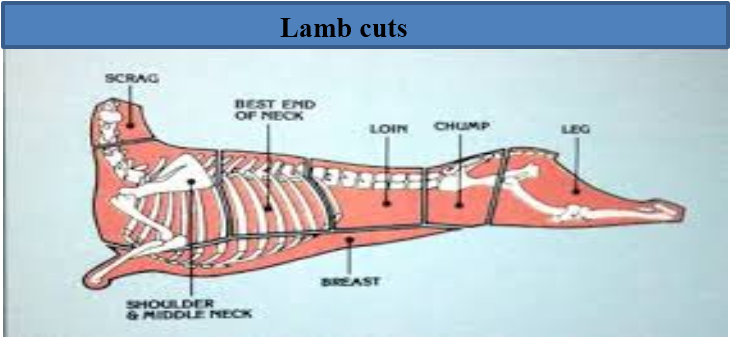
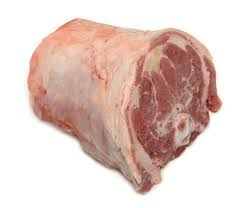
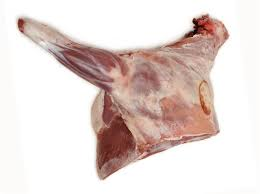
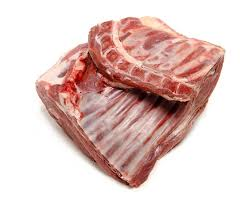
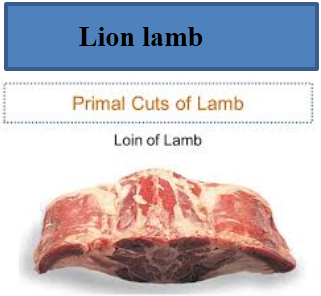
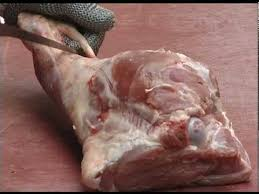
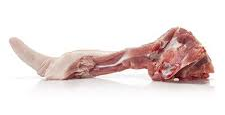
 Scientia Ricerca is licensed and content of this site is available under a Creative Commons Attribution 4.0 International License.
Scientia Ricerca is licensed and content of this site is available under a Creative Commons Attribution 4.0 International License.